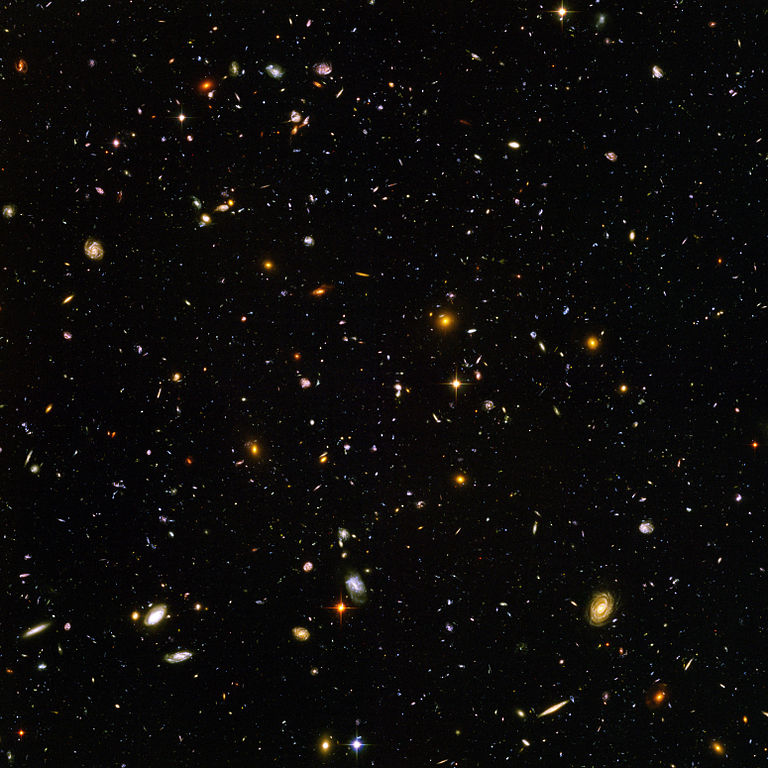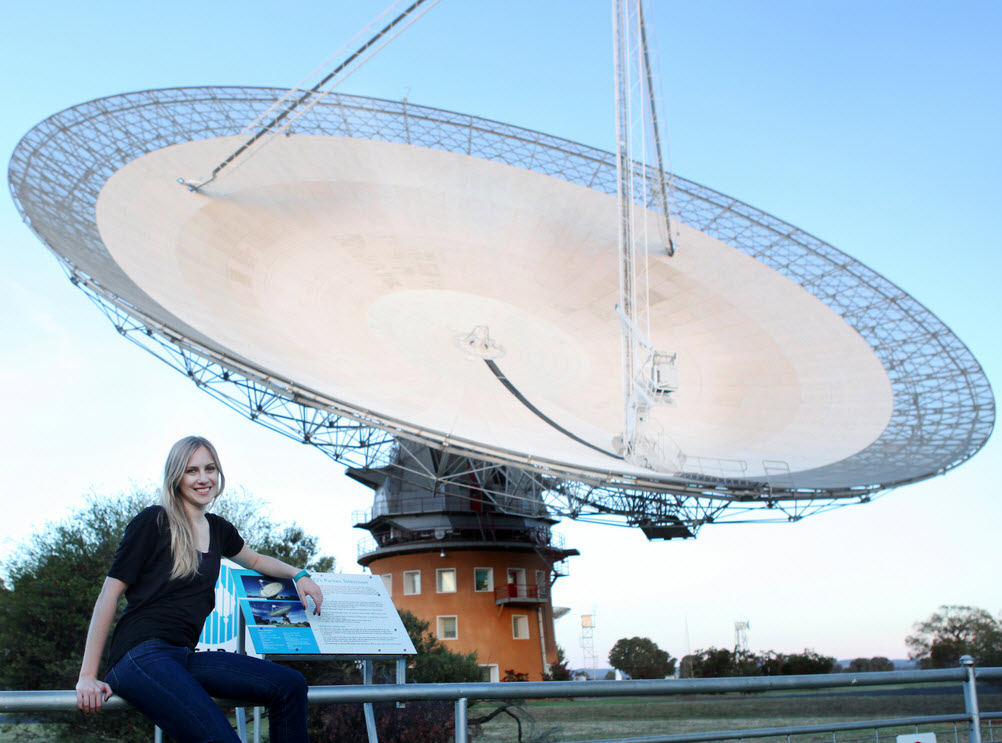Looking at the deep history of the Universe
June 18, 2013

Hubble Ultra Deep Field image (credit: NASA, STScI, ESA)
A new technique that will provide a clearer picture of the Universe’s history and future has been developed by researchers from the International Centre for Radio Astronomy Research (ICRAR).
Described in research published today in the Monthly Notices of the Royal Astronomical Society, ICRAR PhD Candidate Jacinta Delhaize is studying distant galaxies to determine how much hydrogen they contain — by “stacking” their signals.
Delhaize said that one of the pieces of the puzzle is hydrogen gas and how much of it galaxies contained through the history of the Universe.
“Hydrogen is the building block of the Universe, it’s what stars form from and what keeps a galaxy ‘alive’,” said Delhaize.
“Galaxies in the past formed stars at a much faster rate than galaxies now. We think that past galaxies had more hydrogen, and that might be why their star formation rate is higher.
Delhaize and her supervisors set out to observe how much hydrogen was in far away galaxies, but the faint radio signals of this distant hydrogen gas are almost impossible to detect directly. This is where the new stacking technique comes in.

Jacinta Delhaize with CSIRO’s Parkes Radio Telescope during one of her data collecting trips (credit: Anita Redfern Photography)
To gather enough data for her research, Delhaize detected weak signals from thousands of individual galaxies, combining them to produce a strong averaged signal that is easier to study.
The research used CSIRO’s Parkes radio telescope to survey a large section of the sky for 87 hours, collecting signals from hydrogen over an unmatched volume of space and up to two billion years back in time.
Delhaize said observing such a large volume of space meant that she could accurately calculate the average amount of hydrogen in galaxies at a certain distance from Earth, corresponding to a particular period in the Universe’s history.
This provides information that can be used in simulations of the Universe’s evolution and clues to how galaxies formed and changed over time.
Image enhancement by combining multiple images
“Usually astronomers take multiple images of the same object, then combine the images together to obtain a clearer picture (like taking a longer exposure),” Delhaize explained to KurzweilAI. “What we are doing here is combining together brief observations (like short exposures) of the hydrogen signal from many ‘different’ galaxies to get information about the average properties of the galaxies.So while we don’t know anything about any individual galaxies, we have lots of information about the average properties of a population.
“This spectral stacking has been used a few times in the past, but here we have shown that it can be used to study a very large volume of the Universe, which means you can accurately calculate the density of hydrogen out to large distances in the Universe.
“We stacked together 15,093 galaxies between 0 and 0.5 billion light years away, and 3,277 galaxies between 0.5 and 2 billion light years away. By comparing these two samples we found that there is no observable evidence for evolution in the density of hydrogen in the Universe out to this distance — that is, over the past 2 billion years, the total density of hydrogen in the Universe has not changed. Important pieces of information like this help astronomers to simulate galaxy evolution more accurately, and hence to understand the history of the Universe.”
Next-generation telescopes like the international Square Kilometre Array (SKA) and CSIRO’s Australian SKA Pathfinder (ASKAP) will be able to observe even larger volumes of the Universe with higher resolution.
“That makes them fast, accurate and perfect for studying the distant Universe. We can use the stacking technique to get every last piece of valuable information out of their observations,” said Delhaize.
Jacinta Delhaize was the 2008 Western Australian Science Student of the Year and will complete her PhD at The University of Western Australia node of ICRAR later this year. ICRAR is a joint venture between Curtin University and The University of Western Australia providing research excellence in the field of radio astronomy.